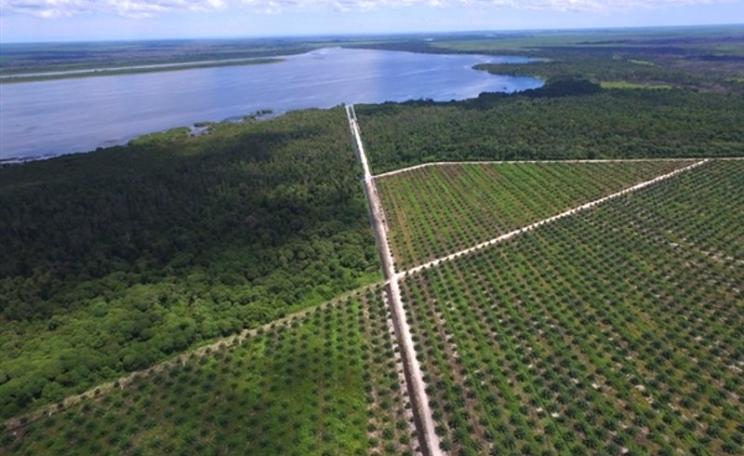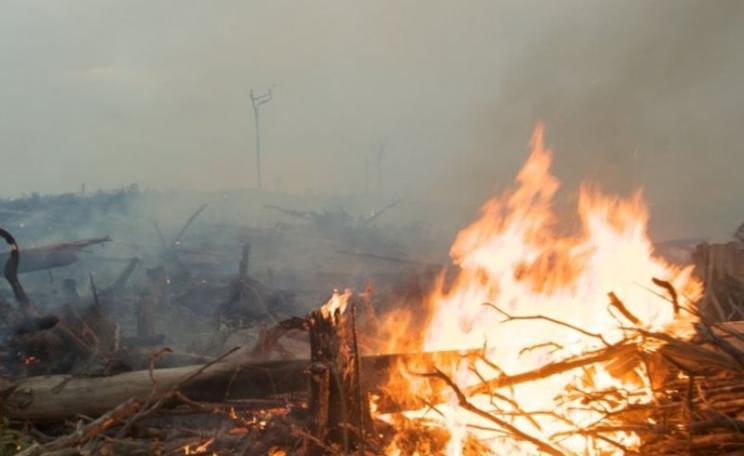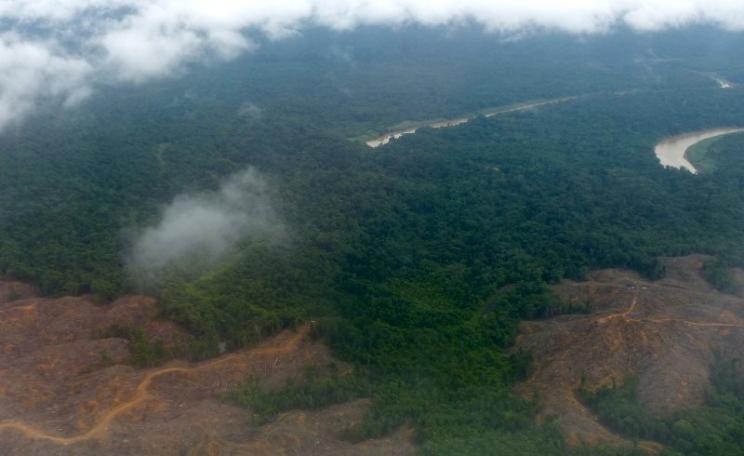Withering, drying, grading and packing tea requires three times more energy than making a kilogram of steel.
Tea is big business: three billion cups of it are consumed every day, 4.8 million tonnes are produced annually, and in Britain two in three people drink it daily.
And tea is much more than just a business - many people and cultures have a deep emotional attachment to the 'cup that cheers', and would be horrified at the idea that there was any threat to their beloved beverage.
Multiple threats for the future
But a new report on the future of tea by Forum for the Future shows that tea growers face multiple threats, from climate change to increasing competition for land in key tea-growing countries.
The main conclusion? Things could be very bad for our favourite hot drink by 2030 if we don't take action now.
This is why we started Tea 2030, a coalition of leading companies and NGOs including Unilever, Yorkshire Tea, Ethical Tea Partnership, Tata Global Beverages and James Finlay.
Our aim is to better understand the challenges and prioritise the actions we need to take now for a successful future for the tea industry.
Spreading out the climate risks
So what are those challenges? Let's start with the 4.8 million tonnes of tea produced annually. Most of this tea is sourced from Kenya, Malawi, India, Sri Lanka, China - some of the countries most vulnerable to climate change.
Because tea is grown in several countries, producers and packers have traditionally been able to shift their sourcing from one country to another; so if yields in Kenya, for example, are bad one year, more tea is sourced from Sri Lanka and vice versa.
But if all of these countries are vulnerable to climate change, and will increasingly be affected simultaneously as conditions worsen, where will the likes of Yorkshire Tea and Unilever turn to then?
Moreover the most immediate impacts of climate change for tea are going to be volatility of yields. Faced with several years of volatility, are tea producers going to continue to grow tea?
Other crops can be more profitable
Then there's competition for land. In Sri Lanka, for instance, one-tenth of the total area used for tea cultivation was converted to crops like rubber, palm oil and fruit between 2005 and 2010. Indonesia has also seen land shift from tea to palm oil.
It could be that some countries will start growing tea, like the Congo for instance, but all agricultural sectors are looking for new farmland: tea will have to compete.
And then the last thing we would want is for the tea industry to become a driver of deforestation in tropical highlands - just as the palm oil industry is moving towards 'zero-deforestation' commitments.
Withering, drying, grading and packing tea requires three times more energy than making a kilogram of steel.
Energy demand three times more than steel
Some of the tea industry's challenges are of its own making. Take resources: water, energy, phosphorous and pesticide use are all determined by the tea industry itself.
Tea growing is not energy intensive but tea processing is: withering, drying, grading and packing tea requires four to 18 kWh energy per kg of made tea, compared to 6.3 kWh required to make a kilogram of steel.
I recently visited a tea processing factory in Rwanda where the barn type-structure storing the firewood for energy was as large as the processing plant itself.
Many processing companies have begun to explore how renewables can play a greater role here, but there is much more to be done and it's crucial we learn from each other to scale-up positive actions as quickly as possible.
Erratic rains, vulnerable soils
As for water, tea has traditionally been a rain-fed crop, but erratic weather conditions are increasingly pushing it towards irrigation.
While that will help overcome the unpredictability of water availability, it will place increasing demand and pressure on local water demand in some very vulnerable areas.
Tea is also grown as a mono-crop - though sometimes under part-shade from citrus trees, as is traditional in South India's Nilgiri Hills. Like other mono-crops will face increasing soil erosion in the future.
One interviewee we talked to as part of the Tea 2030 project spoke of tea plantations falling down hillsides as the soils were too poor to support them.
Agro-forestry a possible solution?
This leads to an increasing use of fertilisers - and one of the challenges highlighted in our Tea 2030 discussions was the constraints in availability of phosphorous over the coming decades.
Only a predicted 25 years of reserves are left in the US - will the tea industry be able to acquire or afford the fertilisers it needs? Should it?
In the longer term we need to be looking at growing tea together with other crops - raising overall productivity, reducing the pressure on land, conserving valuable nutrients, and better protecting soils against tropical rains and sunshine.
3 billion cuppas a year
Now let's turn our attention to the other end of the value chain - the three billion 'cuppas' being consumed annually. As prolific drinkers of tea we, the consumers, have our own role to play.
Despite the many environmental impacts mentioned above, the most carbon intensive part of the value chain remains tea consumption.
Many of us not only boil too much water, but boil it again when we've wandered away from the kettle, or empty out our tea cup when it's got too cold.
What do we then do with our waste? In the US, the amount of tea that is thrown away annually is equal to the size of the empire state building - and they're not even a major tea drinking nation.
In the UK, our facilities for composting are better but millions of tea bags are still thrown into landfill.
Making tea a 'hero crop'
These challenges are only some of those we explore in our Tea 2030 report; another article could be written on the social challenges that tea faces alone.
Despite this, we believe that tea can be a 'hero crop' for 2030: something which delivers more than just a cuppa, it could also have the potential to deliver major benefits to the millions of people involved in the sector, the planet, and the wider economy.
It could be grown by people not in 'distress situations', as one Tea 2030 interviewee said, but by people who earn enough money to live on, send their children to school and feel ownership over what they do.
It could be grown by companies who want to improve their natural environment rather than do the least harm. It could be traded within a marketplace that seeks sustainability outcomes rather than just financial.
The 'tea trident'
This is why we've chosen to focus first on three broad areas to collaborate on: creating financial mechanisms which benefit everyone in the value 'network'; creating sustainable landscapes; and working with consumers to reduce the downstream impacts of tea.
We believe that cross-industry action on these will create the kind of system shift that Forum for the Future believes is essential for any sector's success in a volatile and increasingly uncertain world.
It's only by looking at potential future scenarios for tea that we can begin to set out our own roadmap to a place where we want to be.
Download 'The Future of tea - A hero crop for 2030' report, outlining the growing risks facing this important industry.
Get in touch if you'd like to be involved in the next phase of Tea 2030; complex challenges like these are too big for one organisation to solve alone.
Ann-Marie Brouder is Principal Sustainability Advisor at global sustainability non-profit Forum for the Future.




